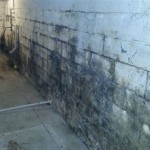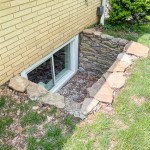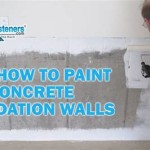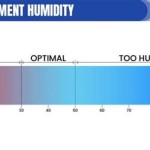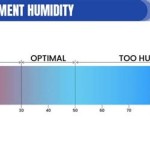Essential Aspects of Framing Basement Walls Vapor Barrier
A vapor barrier in basement wall framing is crucial for maintaining a dry and healthy basement environment. Proper installation of a vapor barrier prevents moisture vapor from penetrating the basement walls and causing damage to the structure and its contents.
Why Use a Vapor Barrier?
Moisture vapor can seep through concrete walls from the ground, especially in humid climates or areas with high water tables. This vapor can condense on cold surfaces, such as basement walls, leading to mold growth, rot, and structural damage. A vapor barrier creates a barrier between the concrete walls and the framing, preventing moisture vapor from reaching the framing materials.
Types of Vapor Barriers
There are various types of vapor barriers available, each with its advantages and disadvantages.
- Polyethylene Film: The most common and inexpensive option, polyethylene film is durable and waterproof but can be easily torn during installation.
- Acrylic Vapor Barriers: Similar to polyethylene film but more durable and vapor-resistant.
- Asphalt-Based Vapor Barriers: Self-adhesive and easier to install than other types, but less vapor-resistant than polyethylene or acrylic.
- Cementitious Vapor Barriers: Applied as a thin layer to concrete walls, highly vapor-resistant but require professional installation.
Installation Considerations
Proper installation of a vapor barrier is essential for its effectiveness. Here are some key considerations:
- Continuous Barrier: The vapor barrier should be installed continuously from floor to ceiling, covering all wall studs, window and door openings, and plumbing penetrations.
- Overlapping Seams: Overlap all seams of the vapor barrier by at least 6 inches and seal them with vapor-resistant tape or mastic.
- Secure Attachment: Secure the vapor barrier to wall studs using staples, nails, or a stapler specifically designed for vapor barriers.
- Tuck and Tape at Floor: Extend the vapor barrier onto the floor slab and tuck it against the wall, sealing it with tape or mastic.
- Trim Openings: Cut and trim the vapor barrier around window and door openings, sealing all edges with tape or mastic.
Additional Tips for Effective Vapor Barriers
- Consider using a vapor retarder paint or primer on top of the vapor barrier for added protection.
- Provide adequate ventilation in the basement to reduce moisture levels and prevent condensation.
- Inspect the vapor barrier regularly for any tears or damage and repair them promptly.
By understanding the essential aspects of framing basement walls vapor barrier and following proper installation techniques, homeowners and contractors can ensure a dry and healthy basement environment, minimizing the risk of moisture damage and maintaining the structural integrity of their homes.

Be Sure To Use A Moisture Barrier When Building Out Your Basement

How To Install A Basement Vapor Barrier Hgtv

How Should I Finish An Existing Basement Wall Jlc Online

Fixing Moldy Basements Vapor Barriers Can Be A Bad Idea

Etw Foundation R 13 Fiberglass Batt In A 2x4 Framed Wall Buildingscience Com

Vapor Barriers For Basements And Crawlspaces Greenbuildingadvisor

Q A Finishing Basement Walls Jlc Online

Basement Insulation Contractor Custom Homes Townhomes Subdivisions

Basement Remodeling Remodel Bars For Home

Bsd 103 Understanding Basements Buildingscience Com
See Also

